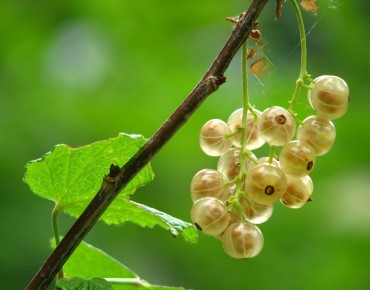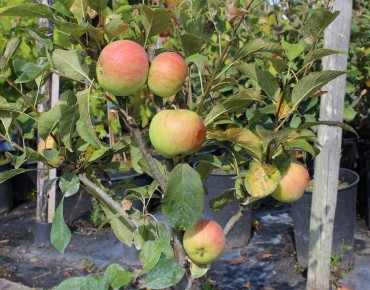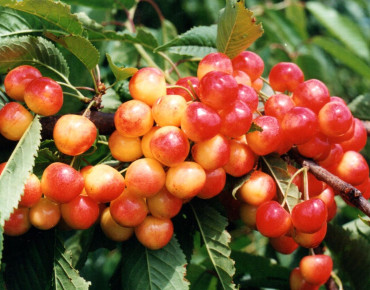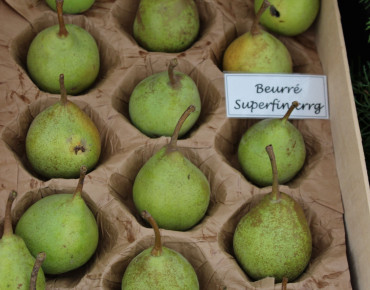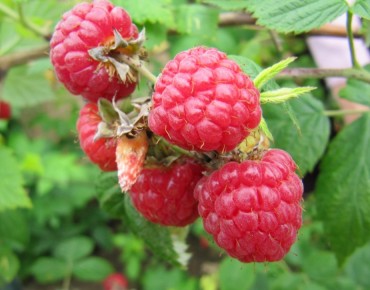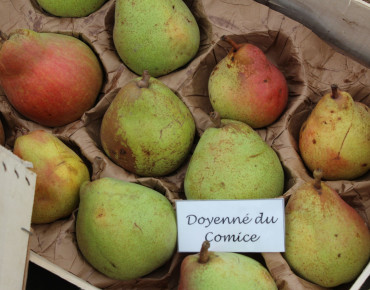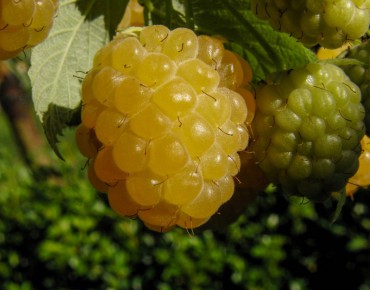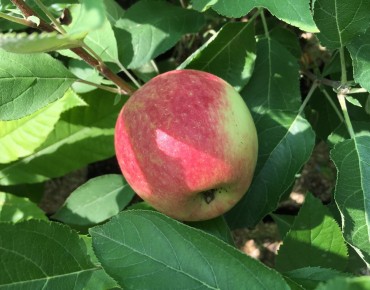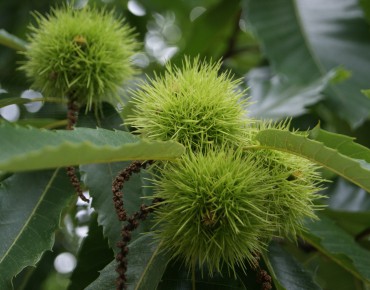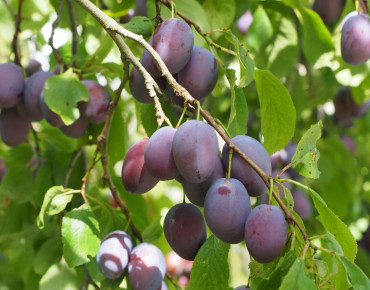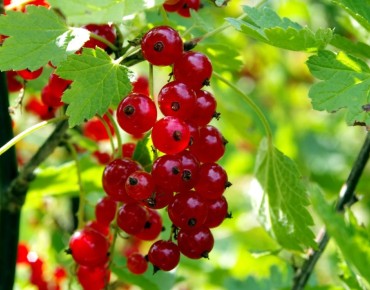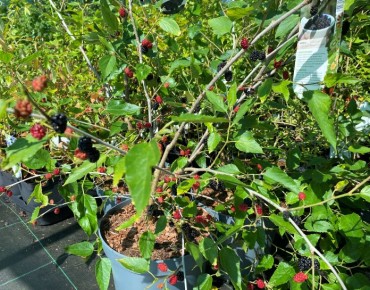- -10%
- Pick up on site
Transparente de Croncels apple tree
Malus domestica Transparente de Croncels
Description
Transparente de Croncels apple tree – Malus domestica 'Transparente de Croncels'
Main strengths
The ‘Transparente de Croncels’ apple tree is a heritage summer variety first cultivated in France in the 19th century. Renowned for its early ripening, abundant yield, and exceptional flavour, this apple tree produces light green to yellow fruits, sometimes flushed with pink or red, with tender, juicy, and aromatic flesh. Its early flowering (group 2, early April) makes it an excellent pollinator for other varieties. Hardy, productive and easy to grow, it is ideal for family orchards, kitchen gardens, and traditional heritage collections.
Origin and background
Geographical origin: France, Croncels (Aube), 1869
Botanical family: Rosaceae
Highlights: Early-flowering, productive heirloom apple; excellent as a fresh fruit or for culinary use
Description and growth habit
Mature height: 2.5 to 3 m (on dwarf rootstock)
Spread: About 3 m
Habit: Spreading crown with slightly arching branches, airy structure
Bark: Brown-grey, becoming fissured with age
Foliage: Deciduous, light to medium green, finely serrated leaves, dense canopy
Growth rate: Medium to fast, begins fruiting in 2 to 3 years
Hardiness: Excellent (down to −25 °C), suitable for temperate to cool climates
Flowering and fruiting
Flowering time: Early (group 2, early April)
Blossoms: Single, white with soft pink blush, rich in nectar, highly attractive to bees
Fruits: Medium to large, pale yellow to light green skin; sometimes translucent. Flesh is white to creamy, juicy, tender, with a sweet, floral flavour and low acidity.
Harvest time: Late August to early September depending on location
Pollinators: Grenadier, Golden Delicious, Granny Smith, Reinette Baumann, Cox Orange, Belle Fleur Jaune, Transparente Blanche, Geneva, Alkmene, Président Roulin
Wildlife value: Early flowers support pollinators; windfalls are popular with birds and small mammals
Light and soil
Ideal exposure: Full sun to partial shade
Soil type: Deep, fertile, well-drained yet moist, neutral to slightly alkaline pH. Tolerates mild chalkiness.
Planting
Soil preparation: Deeply loosen soil and incorporate mature compost or well-rotted manure
Planting season: November to March (frost-free) or year-round from containers
Spacing: 3 to 4 m between trees, depending on rootstock
Soil conditions: Moist, balanced, with no waterlogging. Add sand or compost if necessary
Watering
At planting: Regular watering during the first year; mulch is recommended
Mature trees: Low water needs in temperate climates; support during extended summer droughts
Pruning
When and how to prune:
-
Formative pruning: Shape as a central leader or open vase during early years
-
Maintenance: Gentle winter pruning to open the canopy and remove dead or crossing wood
-
Fruit thinning: Useful to improve size and regularity of crop
Propagation
Propagation method: Grafting onto M9, M106, MM111 or seedling rootstock
Recommendations: M9 for small gardens or kitchen plots; MM111 for free-standing orchard trees
Use in the garden
Best setting: Standalone tree, orchard, edible hedge, or agroforestry design
Companion plants: Borage, comfrey, nettle, clover, marigold – attract pollinators and beneficial insects
Traditional uses
Use: Delicious as a fresh dessert apple straight from the tree; excellent in compote, jelly, juice, or tart. Mildly sweet, low-acid and child-friendly. Best consumed soon after picking.
Pests and diseases
Susceptibilities: May be prone to apple scab, powdery mildew, brown rot, and aphids in humid conditions
Prevention: Airy growth, full sun exposure, organic decoctions of horsetail or nettle. Suitable for organic cultivation with basic monitoring
Growing tips
Advice: Thin fruit if set is heavy. Combine with nectar-rich flowers. Avoid harsh pruning to limit vigorous regrowth. Protect young trees from late frosts after mild springs.
Cultivar characteristics
An early-ripening apple tree with almost translucent flesh, combining sweetness and light acidity. A productive and low-maintenance variety, ideal for fresh use from late summer.
The ‘Transparente de Croncels’ apple tree is an early and historic variety producing juicy, delicately flavoured apples from late summer. A perfect fit for family gardens and traditional orchards, this variety is both an excellent fresh-eating apple and a great choice for juices, sauces and baking. With its early flowering and usefulness as a pollinator, it supports garden biodiversity. It is easy to grow, productive, and suitable for organic gardening. Its hardiness and natural beauty make it a favourite among experienced gardeners and beginners alike. By choosing this tree, you help preserve a valuable piece of fruit heritage while enjoying reliable crops and an ornamental presence in your garden.
Features
- Common name : Transparente de Croncels apple tree
- Family : Rosaceae
- Category : grafted low stem fruit tree
- Spread : 2 to 3 m
- Foliage : deciduous
- Color of flowers : Pinkish white
- Fruit : Medium to large apple, light yellow to greenish skin. White flesh, fine, tender, very juicy, slightly acidic.
- Harvest : Late August - Early September
- Use : isolated - orchard
- Soil : all
- Habit : Rounded
- Enemies : aphids - caterpillars
- Possible diseases : Scab, powdery mildew, brown rot
- rootstock : MM111
- Pollinator : Grenadier, Golden délicious, Granny Smith, Reinette Baumann, Cox Orange, Belle fleur jaune, Transparente Blanche, Geneva, Alkmene, Président Roulin
Expédition & livraison
How does the delivery work?
 As soon as you place your order your plants are selected
As soon as you place your order your plants are selected Each order is processed individually.
Each order is processed individually. Plants are packed, staked and labeled.
Plants are packed, staked and labeled. Packaging is carefully implemented to avoid any problems.
Packaging is carefully implemented to avoid any problems. Packages are ready to be shipped.
Packages are ready to be shipped.
Our delivery methods
Shipping of our plants throughout Europe (except overseas and islands).
Customer reviews









